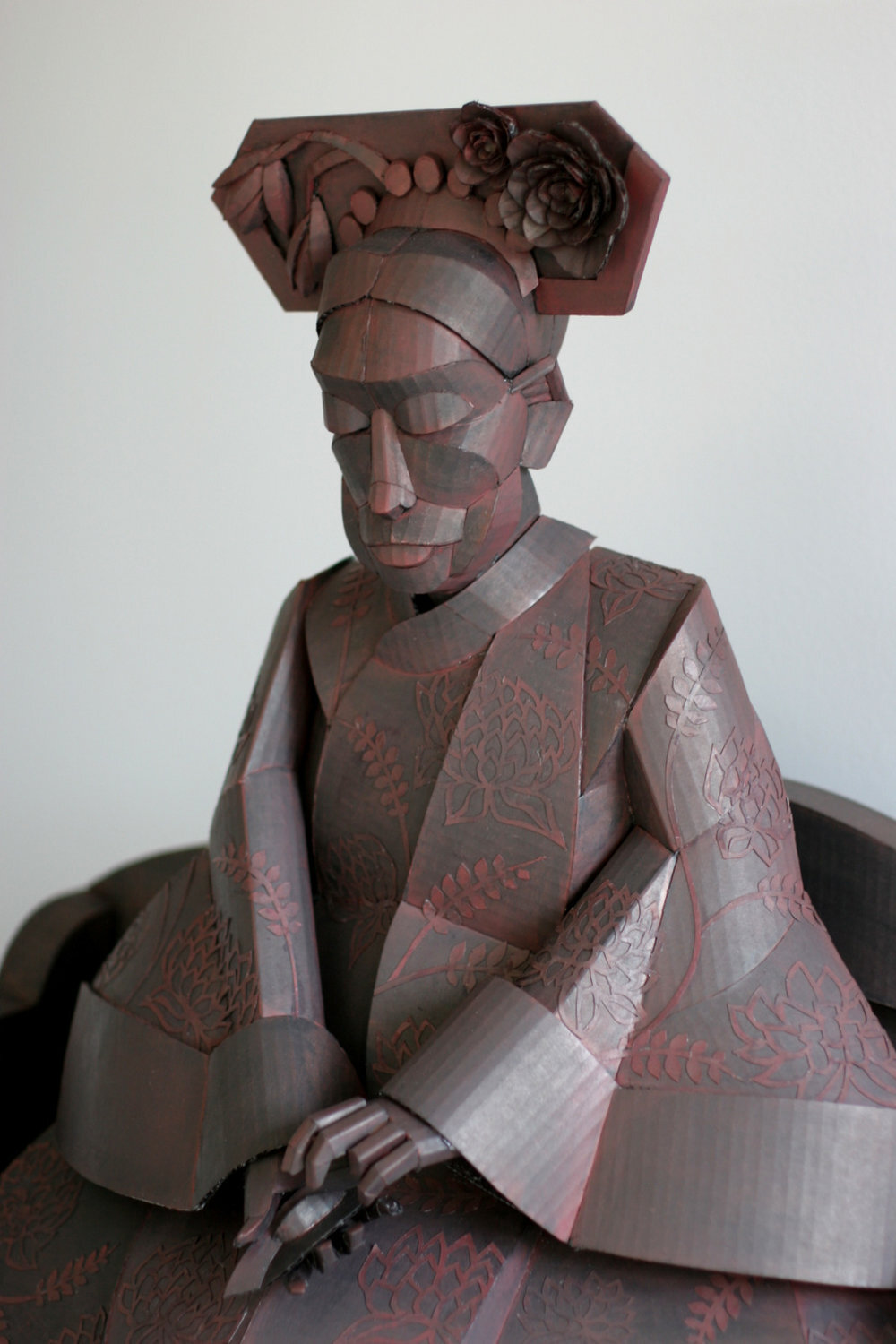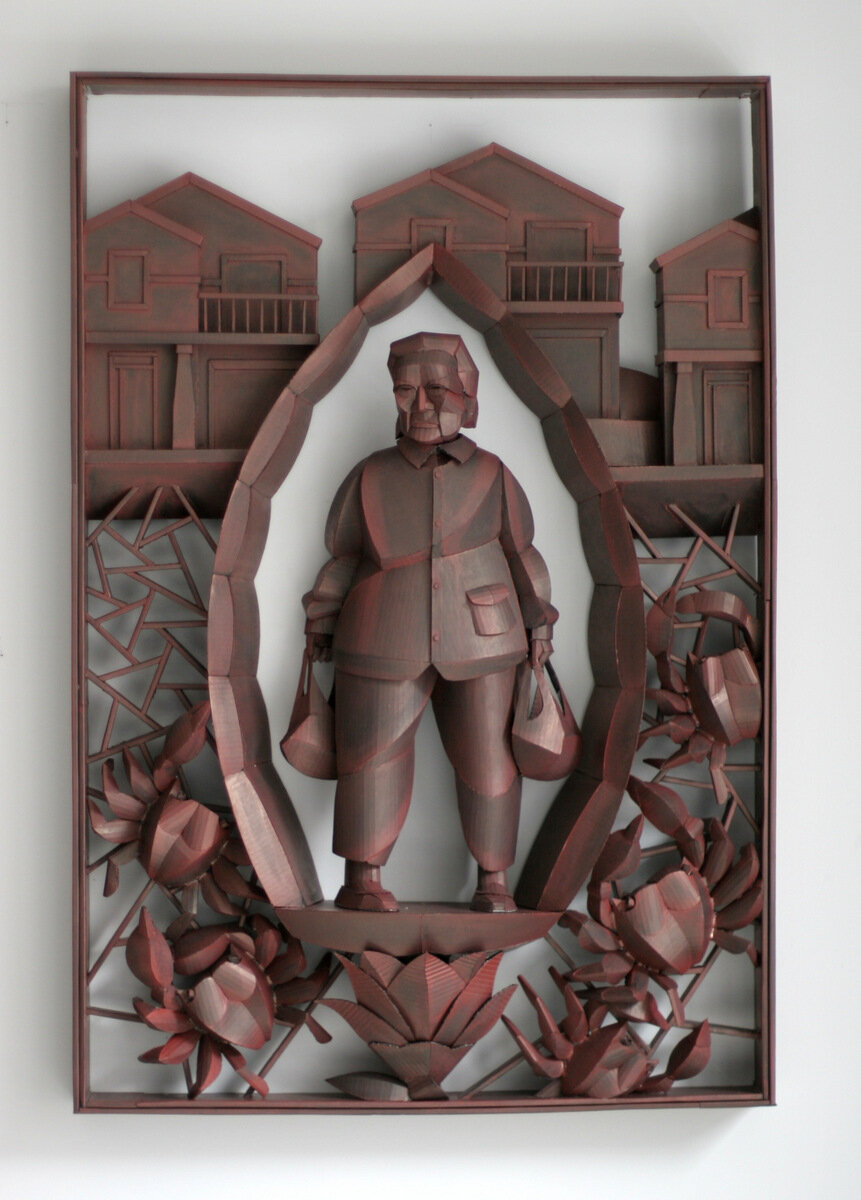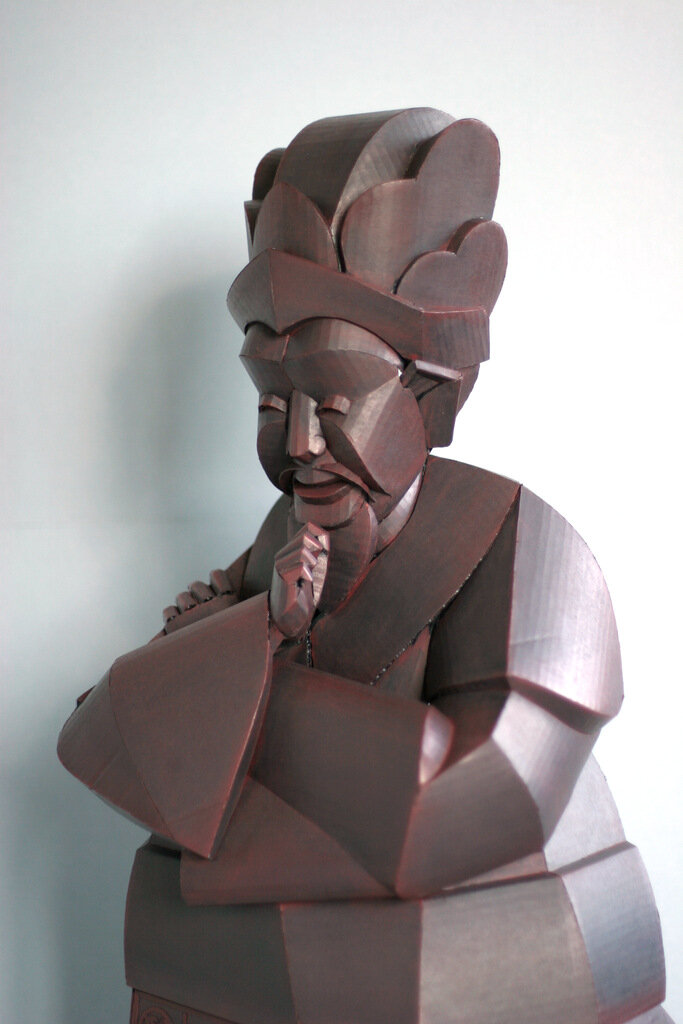Artist Warren King
New York-based artist Warren King works in a variety of media, but his recent works have focused on the use of corrugated cardboard. He began practicing art full time 2013 while living in Sweden. For 15 years prior, he worked in the software industry in the field of data analytics, and was an executive overseeing professional services. Before that, he studied structural engineering at MIT and Stanford University, and worked for 3 years designing stadiums and parking structures.
LR: You really have a talent for bringing cardboard to life, giving your figures expression and character. How do their personalities come out to you?
I have two kids, and when they were younger I would make toys and costumes for them using whatever materials were available and free. Everyone has old boxes in their closets, so I used one to make my first piece, a Darth Vader helmet for my son. Then for Halloween, I made a few more masks, and then it quickly became a regular activity in our house. A big step was when I volunteered to provide masks for a school theater production. You learn quickly when you have to make 30 masks that can withstand abuse from 6 year olds. After a few years of making masks, armor, and toys for my kids, I got pretty proficient with cardboard. Then one day my son challenged me to make something “more realistic, like a face”. I hadn’t really done any projects for myself up until then, and this seemed like an intriguing challenge, so I gave it a shot. Capturing human expression is all about tiny nuances, of course; a millimeter of adjustment to a facial feature can result in a completely different feeling. If I didn’t have years of practice making masks out of cardboard, I don’t think I would have the control over the material necessary to make human figures. When I make figures now, I typically don’t set out to do exact portraits. I look through various photos until I find a gesture or expression that I respond to. After that, it’s like solving a puzzle with a lot of trial and error: Constant adjustment of lines and surfaces, trying to find the combination of simplified geometries that recall that expression.
LR: Following your personal exploration of your ancestors and their home in Shaoxing Village, where do you find inspiration for your pieces?
My grandparents moved from China to Taiwan, which is where my parents grew up. When we were young, when we went to visit relatives, it was always to Taipei, so my brothers and I never had a chance to see China. It wasn’t until 2010 that we finally all decided to make the trip together. The village where my grandparents came from had changed very little in the past several decades, and, like typical tourists, we were all struck by how differently people lived in other parts of the world. But one feeling that we all shared was the strange sense that the people we saw on the streets all looked somehow familiar. I don't know if it was because we grew up in the suburbs of the Midwest, where there were very few people around who looked as we did. When we eventually spoke to a group of the local people and realized that they knew my grandparents from 50 years ago, the feeling was profound and surreal, and somewhat contradictory. I felt such a strong connection to these people, who were like a part of the past that was lost. But at the same time, our differences — in clothing, physical appearance, mannerisms — made it obvious that there existed a huge chasm between us. The feeling was strong, and lasting, but hard to put into a words. Something found, but at the same time the realization of something lost. It was this experience that inspired my first artistic endeavors, and the themes of cultural connection and disconnection are still central to my work.
In all of my recent works, I’m trying to tell a story. Some of these stories come from personal experience, but many are based on narratives about figures in history or folk tales. And some are purely imagined, inspired by a photo or maybe an artifact or object. So I look at a lot of documentary photos, I talk to family members, I read about events in history. What I’m looking for is something that sheds light on, or raises a question about, my connection to my culture and ancestors. And then I try to develop ways to visually express these connections. Honestly, this is the part that I struggle with the most. Coming from an engineering and analytical background, where things have to be explicitly stated, I’ve been struggling to learn how to use imagery, metaphor, and iconography to evoke an emotional response. But this is why I’m so grateful for the opportunity to make art at this point in my life; it’s giving me a chance to explore a totally new way of thinking. I am still fascinated by people’s reactions to my work when I show it publicly, to see people connecting in a powerful and personal way to these figures that I’ve made by my hands. And the reactions are not always positive. It took me a while to accept that different people will have different responses to my work, and that it’s totally fine if they do.
LR: How does food play a role in your work?
Honestly, I don’t think it’s even possible to separate food from my relationship to my culture. And of course, understanding the culture of my ancestors is the central theme of my work. Virtually every conversation I had with my grandmother, who lived to be 104 years old, began with her asking me, “Have you eaten yet?”. She was economical with words, and even though she lived through more turmoil and change than I could possibly imagine, she was never really fond of reminiscing, storytelling, or sentimentality. She didn’t keep mementos or even photographs of her past. One of the very few things that she kept of her life in China was her knowledge of cooking, but this she shared wholeheartedly. Through the process of making my art I’m trying to connect who I am today with the culture that my ancestors left behind decades ago. The compulsion to explore these things stem directly from the memory of watching my grandmother’s gnarled hands as she quietly wrapped dumplings in our kitchen in suburban Wisconsin.




